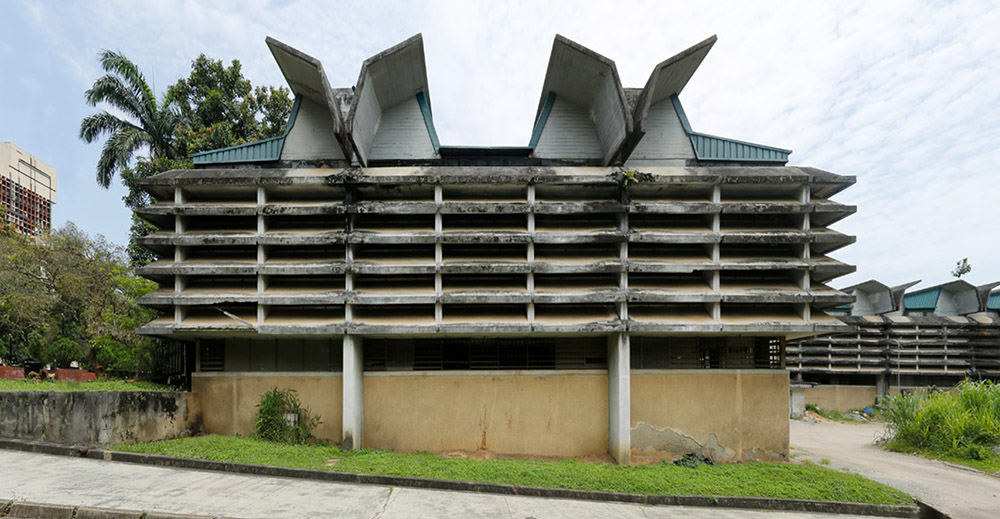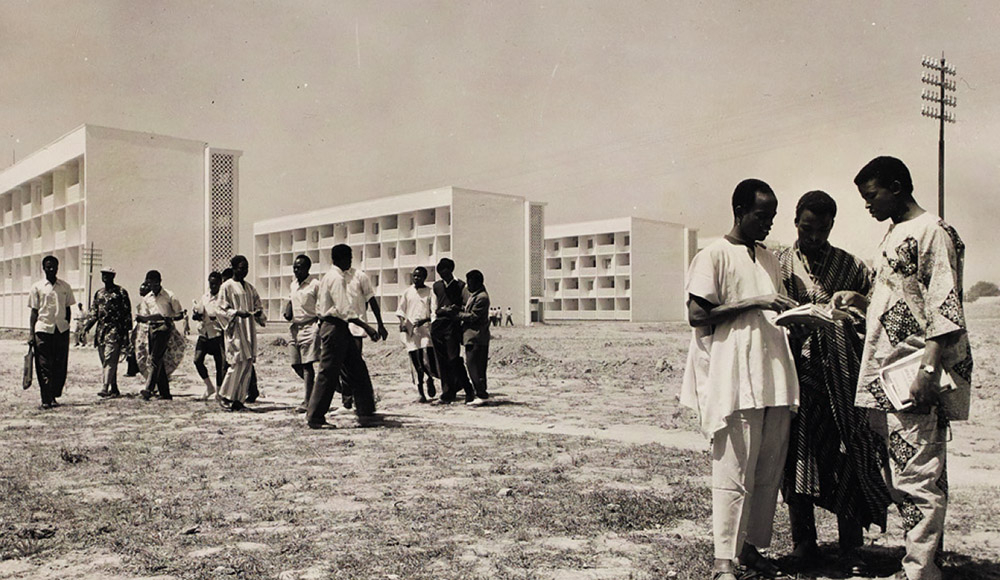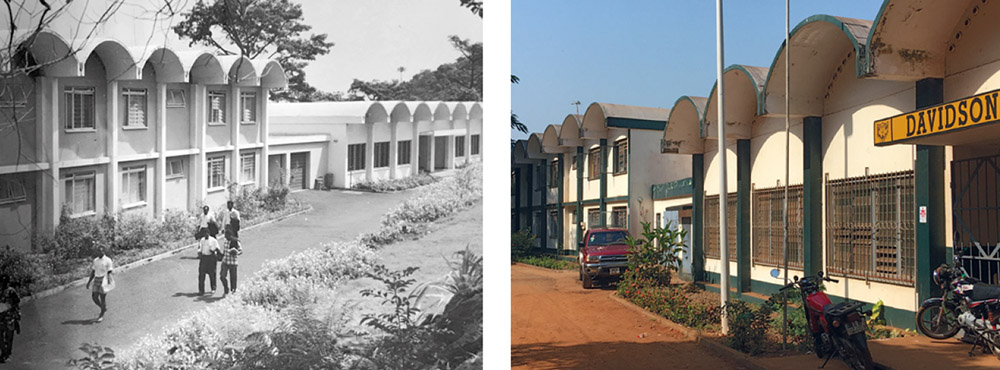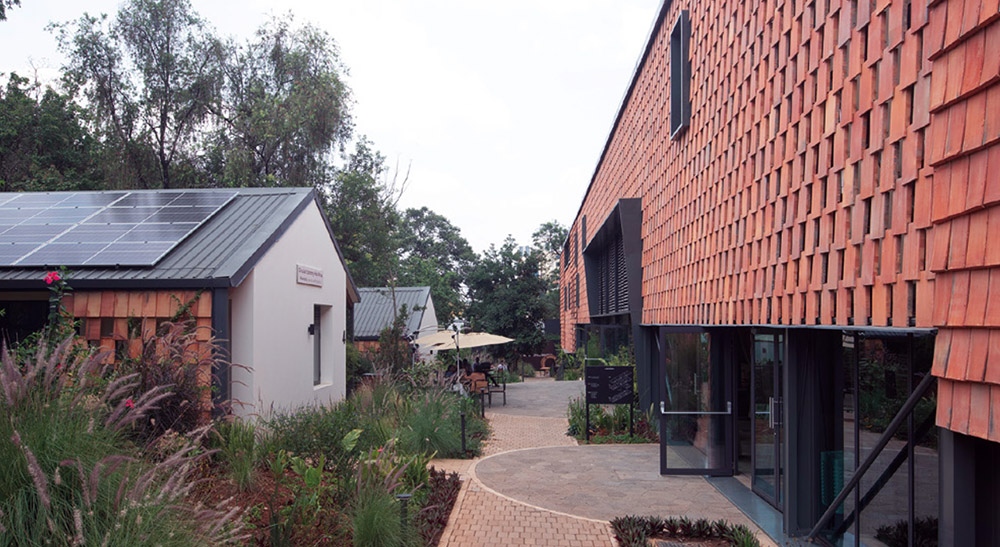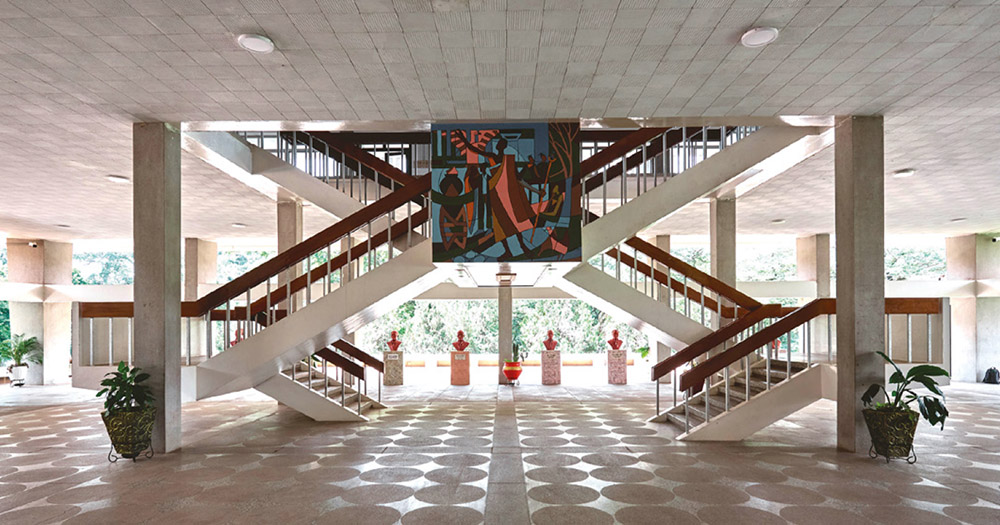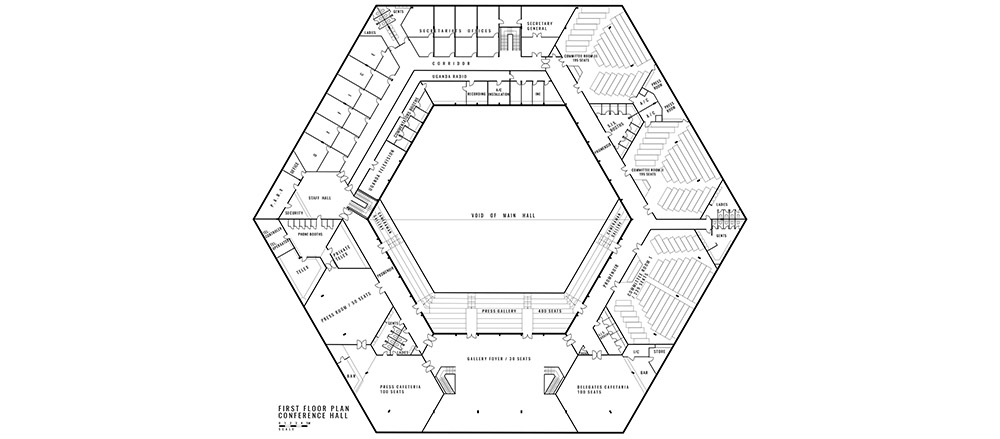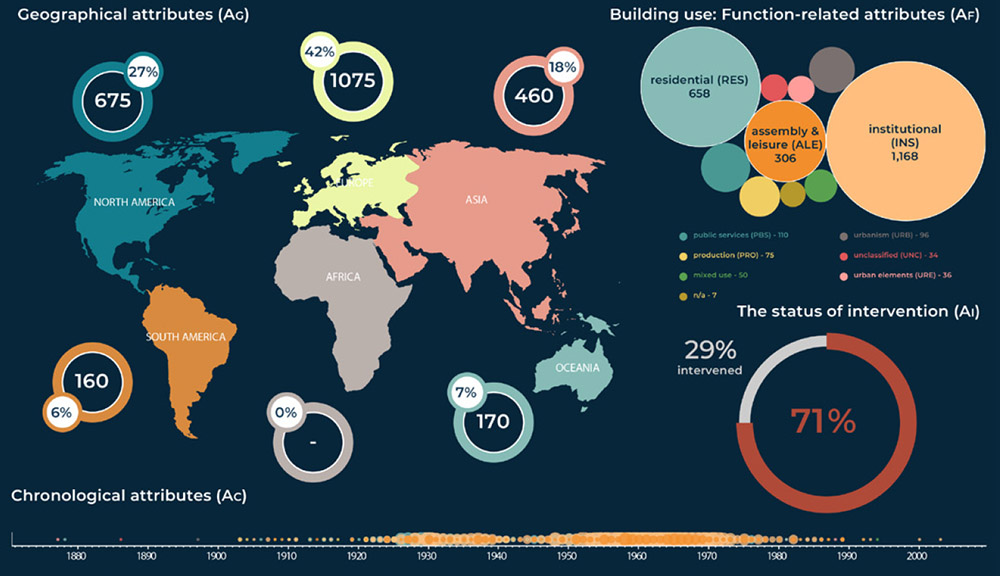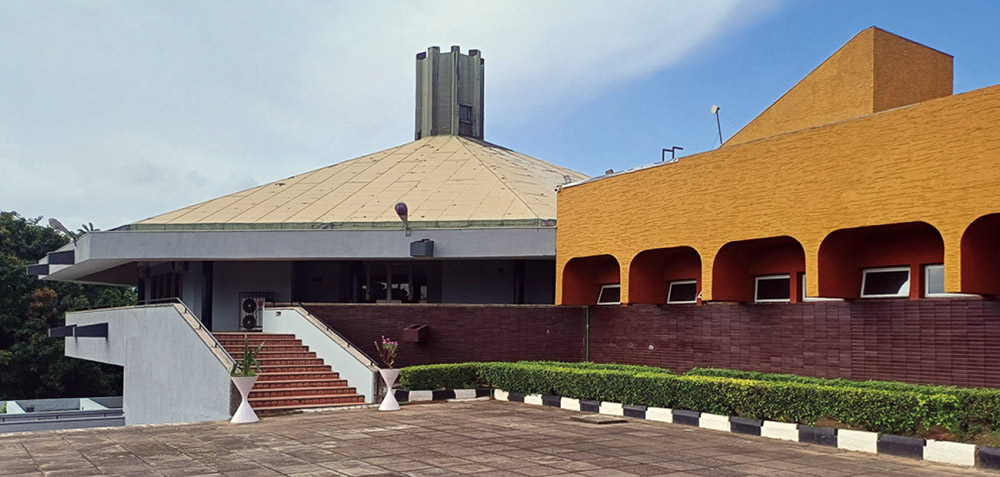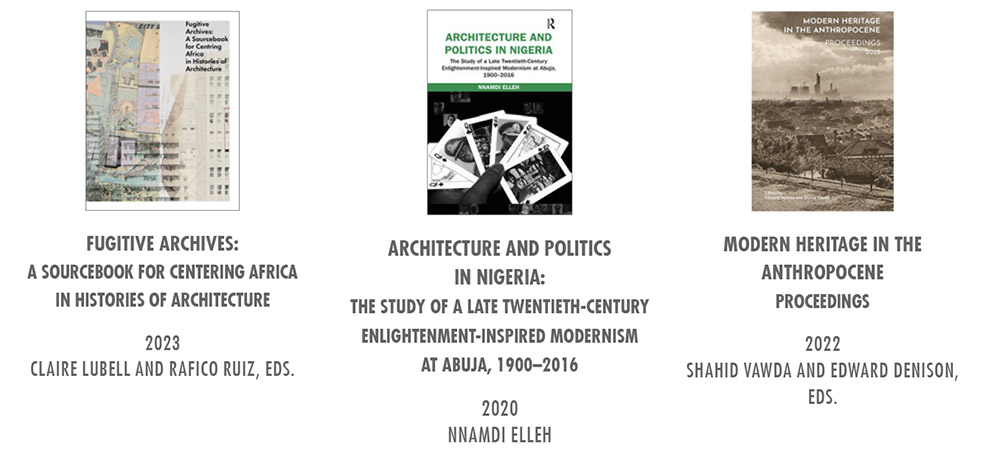
Guest Editors: Kuukuwa Manful, Ola Uduku, Christian Burkhard, Anica Dragutinovic, Taibat Lawanson, Mark Olweny
Editors: Uta Pottgiesser, Wido Quist
Docomomo International is proud to present the results of the international project Shared Heritage Africa: Rediscovering Masterpieces and other selected papers from our call for papers Shared Heritage Africa – Campuses, published in December 2022. The SHA project itself, coordinated by Docomomo Germany, focused on rediscovering post-war modern buildings from the 1950s-1980s in the partner countries Ghana, Nigeria, Uganda, and Rwanda.
This Docomomo journal highlights the importance of the combination of local workshops, including student writing and photography workshops, exhibitions and ‘digital fellowships’ using the internet for dissemination. Exploratory interviews and narratives are used to collect testimonies of contemporary users⎯applied in the SHA project as well as in the other articles. Aspects discussed are, among others, the physical; deterioration (technical, functional, social), the cosmological; through the sense of identity, community, place attachment, maintenance and taking care, ownership and appropriation, and the environmental; considering the quality, and sustainability of spaces, and also conditions of comfort and satisfaction.
Editorial
-
Docomomo International is proud to present the results of the international project Shared Heritage Africa: Rediscovering Masterpieces and other selected papers from our call for papers Shared Heritage Africa – Campuses, published in December 2022. The SHA project itself, coordinated by Docomomo Germany, focused on rediscovering post-war modern buildings from the 1950s-1980s in the partner countries Ghana, Nigeria, Uganda, and Rwanda. This period of independence from colonial rule, from the United Kingdom (Ghana 1957, Nigeria 1960, and Uganda 1962) and from Belgium (Rwanda 1962), has a...
Introduction
-
Access to formal education has long been considered essential to progress by people in Africa. The design and building of educational institutions were also an important part of the post-war modernism construction boom around the world and on the African continent, coinciding with post-independence nation-building. From the 1940s through to the early 1970s, ambitious nations from Algeria to Zimbabwe invested in universities and higher educational buildings as both literal and physical centers of intellectual advancement for their nations’ youth in that jubilant era, heralding freedom...
Essays
-
Nigeria’s independence ushered in an era of university creation. Four new universities were established by 1962, just two years after attaining self-rule. Twenty-five years later, they each commissioned and published a book that documented their histories. This article employs a textual analysis of these publications within the context of contemporary research on university architecture in 20th-century Nigeria. It examines these books as a historical source for tracing the universities’ architectural histories. It further explores the ways they documented their built environment through...
-
Fourah Bay College was the first Western-style university to be established along the West African coast in 1827. Primarily used to train missionaries and traders operating in British West Africa, it remained one of the premier educational establishments, overlooking the docks of Cline Town in Freetown, Sierra Leone. Following the Colonial Development and Welfare Acts and civil unrest in the aftermath of World War II, British colonial policy began to fund a series of secondary and tertiary education institutions. Modeled on the new University of the West Indies, these new universities...
-
Professor John Owusu Addo is a Ghanaian tropical modern architect and a pioneer in architectural education and practice in the nation-building of Ghana and other Commonwealth countries. His contributions to the modern architecture discourse seem to be overshadowed by the cohort of architects of both Western and Socialist origin who practiced in Africa during the decolonization era. The Community Center at the Kwame Nkrumah University of Science and Technology (KNUST) campus in Kumasi-Ghana was designed by him; it represents a classic example of ‘unknown’ heritage within the narrative....
-
In order to document the architectural production of the Modern Movement in Tunisia1, we propose in this article to study a major project in the production of academic institutions, the “Ecole d’Agriculture de Mograne” at Zaghouan in northern Tunisia. The school was designed by architect Jean Pierre Ventre (1913-1979) and his collaborator Marcel Faure (1882-?) and built between 1947 and 1952. The commission for this institution of higher learning, located in a verdant natural setting, was programmed with the political aim of bringing a breath of modernity to the country, breaking with...
-
Obafemi Awolowo University (OAU), Ilé-Ifẹ̀, Nigeria, was established after Nigeria’s independence in 1960 as the University of Ife. Bauhaus architecture school graduate Arieh Sharon (1900-1984) designed the master plan and most of the initial buildings in the university core through Israeli-Nigerian technical development relations. The often written about campus is one of the most prominent modern architectural exemplars in Africa and one of the exhibits during the one-hundred-year celebration of Bauhaus–Bauhaus 100–in 2019. Like many examples of modern architecture around the world,...
-
The architectural design of educational spaces in Sub-Saharan Africa after the 1950s was heavily influenced by Tropical Modernism, an architectural style that rose to prominence in Africa during the period of independence movements across the continent. Notably, in growing independent countries such as Rwanda and Ghana, educational buildings assumed profound symbolic significance as tangible representations of progress and development. This article explores the architecture of two primary schools, École Belge in Kigali, Rwanda and Republic Road School in Tema, Ghana. It highlights the...
-
This article presents two modernist building case studies, one each from East and West Africa which explore approaches to modernist public building conservation. The Rukurato Hall in East Africa, formerly used as a regional assembly hall for the Bunyoro Kingdom in Uganda, is now used as the parliament building of the Bunyoro Kitara Kingdom.
The Great Hall in West Africa at the Kumasi University of Science and Technology (KNUST) serves as an institutional hall; it is a monument of academic and cultural significance in Kumasi. This article delves into the historical evolution of the... -
The International Conference Centre and the adjacent Nile Hotel in Kampala were built in 1971-73 to facilitate the 12th Heads of State Summit conference of the Organisation of African Unity (OAU) by architects from one of the founding countries of the Non-Aligned Movement: Tito’s Yugoslavia. Being too young to be considered historic, both buildings appear out of place and out of time, undervalued and overlooked in a city without a registry and planning control. While the conference center is in a well-maintained and original condition, the hotel’s renovation has transformed it beyond...
-
The Modern Movement encompasses a diverse collection of both iconic and ordinary treasures of architecture worldwide, among which some are safeguarded with respect to their values, while others were demolished, have undergone alterations, neglect, or lack of maintenance and preservation over time. Docomomo has been playing a pivotal role in documenting and safeguarding significant architectural works of the 20th century. Its National and Regional Working Parties (WPs), spread across the globe, have diligently compiled archives of photographs, drawings, historical records, and research...
Workshops and Exhibitions
-
The Shared Heritage Africa (SHA) project focused on the rediscovery of modern university campuses and seminal buildings in West and East Africa from the 1950s to the 1970s. The project involved nine research fellows from Ghana, Nigeria, and Uganda, who conducted heritage research, local writing and photography workshops, exhibitions, and published content to document Africa’s built cultural heritage, eight of them are presented here. This initiative aimed to promote sustainable urban and social development, drawing on African and international efforts and targeting students and young...
-
This paper looks into the 2022 writing workshop sponsored by the British Academy with Nigerian and Ghanaian participants. It was focussed on the present status of modern buildings, which are quickly replaced by newer ones, eroding the prevailing vernacular of the landscape of African university campuses. A new approach was adopted to documenting the stories of these buildings, which had existed prior to the time, by Africans, not foreigners. Postgraduate students were co-opted to participate in a five-day writing workshop across three universities in Nigeria. The teams were headed by...
-
“Campus Utopias: A Visual Re-reading” describes a multidisciplinary graduate course conducted collaboratively by TU Delft and METU Ankara’s Architecture Departments in 2022. The research course focused on the key urban and architectural features of selected campus projects, examining how the modernist architects engaged in these designs were able to use them as a basis for the experimentation of new educational-residential models for living.
This research paper explores the formal aspects of these campuses and their architectural significance. It recognizes the diverse geographies...
Book Reviews
-
A review by Mark R. O. Olweny of Fugitive Archives: A Sourcebook for Centering Africa in Histories of Architecture edited by Claire Lubell and Rafico Ruiz (2023) and a review by Immaculata Abba of Architecture and Politics in Nigeria: The Study of a Late Twentieth-century Enlightenment-inspired Modernism at Abuja, 1900-2016, Nnamdi Elleh (2020).

